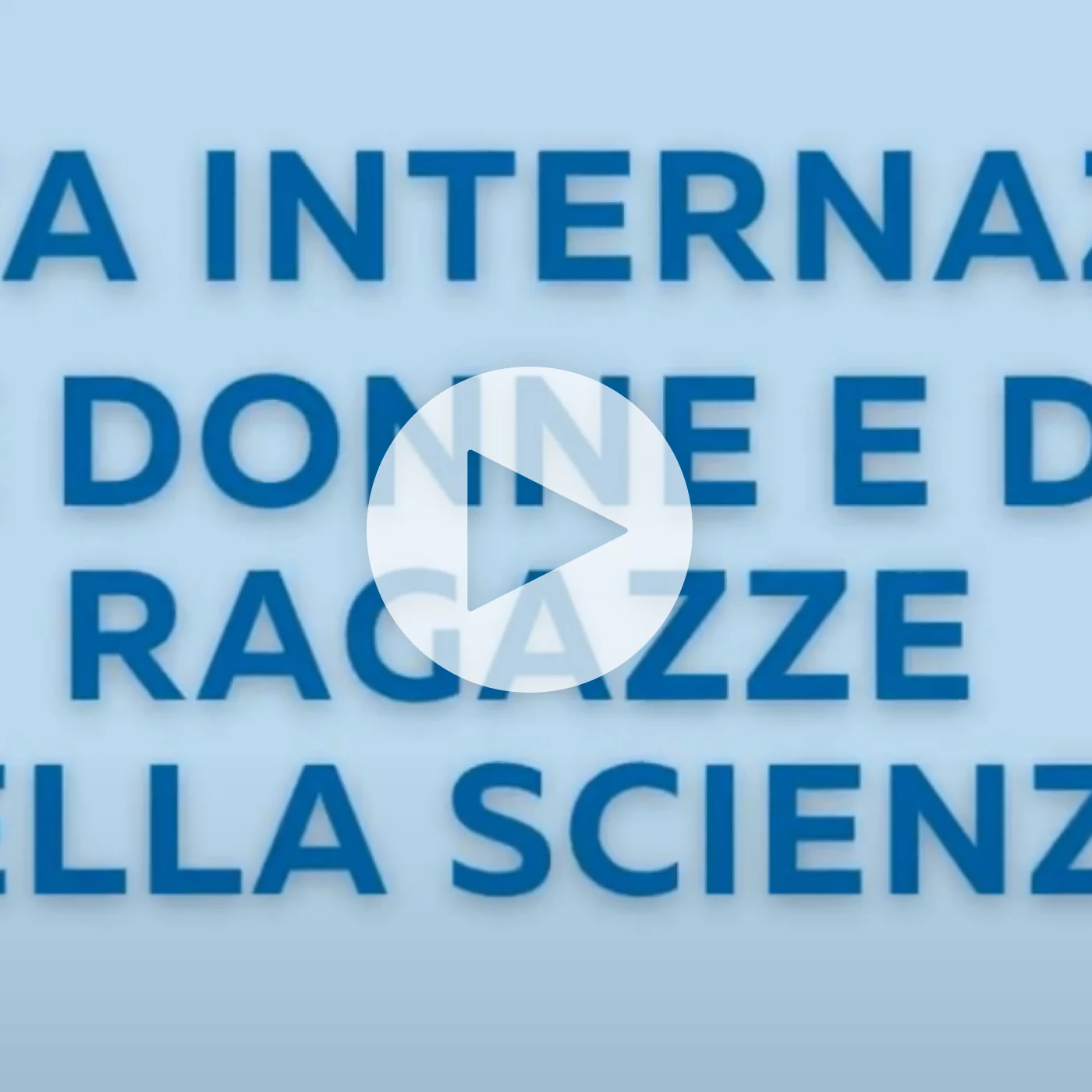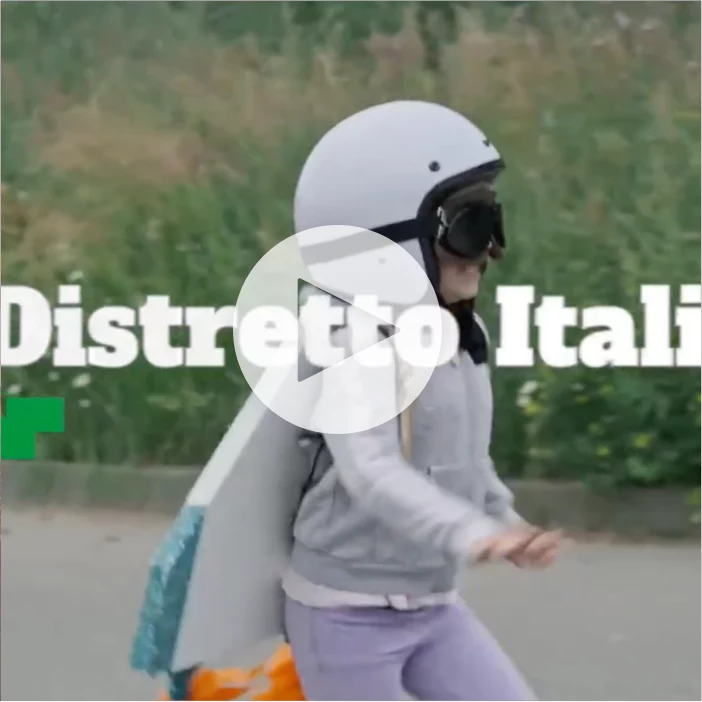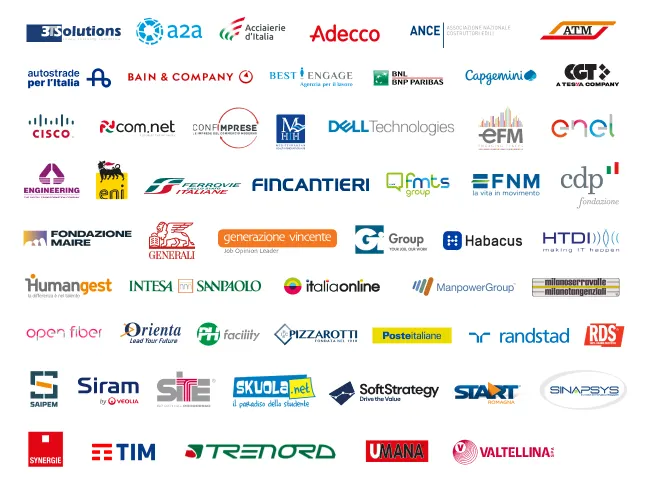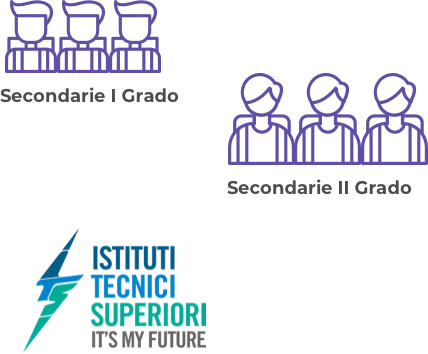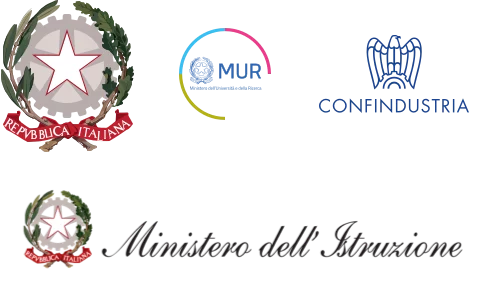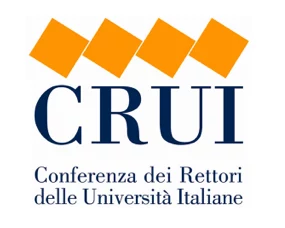Education & Innovation
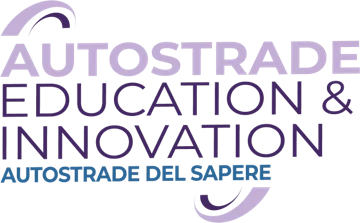
Network University
Our Knowledge Infrastructure
Network University aims to build a network that, like the motorway infrastructure, runs throughout the country and unites it with the power of Knowledge
Find out the operating Universities in each region
- Piedmont
- Lombardy
- Liguria
- Tuscany
- Lazio
- Campania
Piemonte
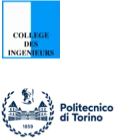
Lombardia

Liguria

Toscana

Lazio
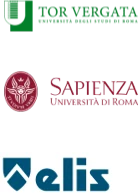
Campania

STEM Project
The term STEM refers to women in business-related technical roles with an educational background in disciplines such as Science, Technology, Engineering and Mathematics. Roles and disciplines which still suffer prejudice and misconceptions that preclude their access to the female population. We need the contribution of girls and women in STEM to support innovation and social and economic progress in the country. Let's get to know them better to understand the challenges, expectations, obstacles and opportunities that mark their paths.

Distretto Italia is the response of big business to the challenge of knowledge, to support Italy in growth, development and the fight against unemployment.
The name is meant to indicate the desire to draw on the heritage of knowledge in Italy. The program aims to orient, train and create a new generation of professionals, counting on the participation of 32 companies united in the Elis Consortium and collaboration with schools and universities.
The project proposal: the guidance
Counselling is effective only if it promptly faces the student with the opportunities to enter the labour market.
The guidance opportunity for Middle School increases the available time horizon and ensures proper timing to enter the labour market for operating staff
Guidance in the last years of high school ensures proper post-high school path choice, in line with the Italian needs and the reduction of the NEET phenomenon.
Guidelines
Trade Schools
Fellowships
Internships
Seeking skills for today, creating those for tomorrow
What will we do?
- Map the strategic vision of the future and guidelines to train the skills of tomorrow
- Map the skills and professionals that are sought after today and most difficult to find
- Design the skills needed tomorrow
- Share experiences and create programs to initiate common pathways that can respond to system needs
How will we do it?
- A shared document (e.g., trades white paper) that contributes to knowledge sharing and strategic direction
- A mapping of the professional figures and the skills required (changing over time)
- The creation of multi-company training pathways (Trades Schools, ITS) that, inspired by present best practices, respond to the need for skills
The work plan

Examples of experiences for further study

Schools for Schools
Seeking skills for today, creating those for tomorrow
What will we do?
- Design standard models of work-related learning that can pool companies' experiences in fostering knowledge of trades and the world of work, using modern and effective communication
- Build, in partnership with universities, a dual learning offering deliverable nationwide in both digital and on-site formulas
- Plan on-site "mentoring" activities, bringing testimonials from companies to promote, to teachers and students, campaigns on relevant issues (e.g., school dropout, women/STEM)
How will we do it?
- Dialogue for collaboration protocols with CRUI and universities to build joint dual training pathways with the Consortium
- Creation of specific dual training by competence-trade-territory in partnership with the participating Universities in order to use NRPP university funds with target of 1 million children
- Promotion at schools of the Consortium's dual training offerings to foster dialogue on relevant topics in the school-business relationship with students and teachers, also through site visits and company testimonials
The work plan

Examples of experiences for further study

Officine Futuro
Seeking skills for today, creating those for tomorrow
What will we do?
- Listen to students and design a National Orientation Plan that offers structured, consistent, easily accessible, and attractive guidance pathways that start from Middle School
- Build the services and content to be included in the plan, with language appropriate to the target audience such as: self-assessment, tutorials on trades, testimonial/influencer videos, training on ESG issues, practical guides to school choice. Special attention to inclusion and accessibility for children with disabilities
- Develop an app for access and use of services and content and support it with an ad hoc communication plan
How will we do it?
- Design of the National Orientation Plan starting with a campaign to listen to students
- Development of services and content to be included in the plan, involving specialised partners
- Design and development of the app (initially launched in a pilot version with limited services and content)
- Launch of a communication plan using social media, school networks and dedicated events (e.g. guidance day)
- Development of targeted orientation content for children with motor, sensory or learning disabilities
The work plan

Examples of experiences for further study

